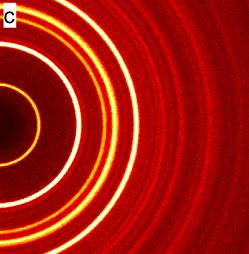For anyone wondering it’s because the bowling ball slightly pulls the earth faster toward itself. This amount is too small to possibly measure. But imagine if the bowling ball were the size of another Earth and it’s easier to see why it happens.
Thanks for the non-jargon version
This amount is too small to possibly measure
What the fuck did you say to me you little bitch? I’m going to go get $300 million in funding to create a device so complex and so sensitive that a butterfly sneezing 30 miles away will fuck it up and then I’m going to directly measure the the acceleration of the earth as a result of the mass of that bowling ball. You fucked up, kiddo.
- Average metrologist, probably
The issue isn’t so much the sensitivity (although that is a significant issue), it’s all the other crap going on. You’ll probably be able to filter out the Mains Hum, but every anything moving in the same axis as the test will confount the data.
I’m thinking we might set up the instuments near counterweight energy storage or pumped hydro, and some on the exact opposite side of the planet, and try to measure the movement of the earth that way.
We can already see a change in the length of a day after big earthquakes and dam construction/destruction, but I don’t think the acceleration has ever been measured directly.
When you drop them at the same time, it doesn’t matter though.
because of two bodies can not occupy the same space, the feather and the ball will be in different position when you drop them. And therefor gravitation will pull the earth slightly more toward the ball and slightly less toward the feather.
But being more massive means that due to inertia the ball will take just a tiny little wee bit longer to start moving no? So they end up falling at the same time.
Also, are these Newtonian mechanics? How do they compare to relativity at the “bowling ball and feather” scale?
Someone please correct me if I’m wrong. It’s been a while since I read anything physics-related.
The acceleration from gravity would be the same no matter the object mass (~9.8m/s²).
Oh yes! I omitted that part, but what I meant to say is that mass and inertia balance each other, so that in the end the acceleration from gravity ends up the same for any object.
The bowling ball will still pull the Earth more. For us, everything accelerates at 9.8m/s² (because we all fall to the same Earth), but the Earth accelerates differently per attracting object.
The above is just referring to the fact that the standard “feather vs. bowling ball” question assumes the earth/moon/ground is immovable. In that case, Newton says they fall the same.
The fact that the ground is not immovable is what’s being referenced — in this picture, things don’t “fall,” they are each accelerated towards each other.
This is fascinating! Both of them accelerate toward the earth at the same rate, but because of the bowling ball’s greater mass, the EARTH accelerates faster toward the bowling ball than it does toward the feather, so it’s imperceptibly faster XD
But they are being dropped at the same time for dramatic effect, so the earth will also be accelerating towards the feather at bowling ball speeds because the feather is next to the bowling ball, therefore they still land at the same time.
That’s only be true if the feather was in the same position as the ball. Otherwise, the earth is moving ever so slightly more towards the ball.
You are forgetting the sun. The earth turns in the direction of sun ever so slightly so if you align the feather next to the ball in the side of the sun, then probably the feather falls faster
So, what you’re saying is, to do this experiment correctly, we have to stop the earth from moving. . I’m keen.
🎵 I’ll stop the world and melt with you 🎵
No, because the earth is accelerating towards the bowling ball and the feather is next to the bowling ball, the force vector is (ever so slightly) greater towards the bowling ball than the feather, thus the bowling ball drops faster
Yeah I thought about it and I guess I’m wrong. I thought that maybe the ball still wouldn’t be faster if there was a perfectly flat surface for both objects to land on, but I imagined how it would be if the bowling ball and feather were actually very far apart, and of course they wouldn’t be travelling perpendicular to the platform, and the path of the feather would follow more of a curve. So a slight distance would be the same thing just less.
Can someone explain how the Earth accelerates towards an object? Is this just because objects with mass attract things?
You got it.
In the same way that earth has gravity that attracts objects, the objects have gravity that attracts earth. See also Newton’s third law, also known as “For every action, there is an equal and opposite reaction.” - for the earth to attract something, the earth also has to be attracted with the same force. It’s just that the earth has a lot more mass, so the force barely accelerates it.
The gravitational force equation actually takes into account the mass of both objects and their distance. The only reason we can throw out a gravitational constant of 9.81m/s^2 for most objects on Earth is because the mass of the Earth is so large that the mass and/or distance of the other object would have to be equally large in order to make any significant change in that value. Technically though, a bowling ball at sea level falls slightly faster than a bowling ball at the top of Everest, as does a bowling ball and feather from the same height. The reason is more accurately that they are experiencing slightly higher or lower gravitational forces, which cause them to accelerate (in conjunction with all the other forces acting on them).
Yes. And that force is proportional to acceleration so it accelerates earth
Removed by mod
They are being moved, it is just imperceptible to the human eye.
It is all a matter on how precise you want to be
Thank you.
That’s a good one. Did not know that xkcd yet.
It’s not even because it’s heavier, it’s because it’s way more dense.
It’s not density, it’s mass. A mass of 1kg compressed to the density of the Sun’s core would pull the Earth with just as much force as a 1kg ball of styrofoam.
And is the Sun was replaced with a black hole of the same mass, the Earth would just keep on rotating around it without issues, if slightly frozen
Xkcd did a what if on a black hole moon (getting it to collapse into one may be impossible, but a black hole the mass of the moon is theoretically stable), and it has the same conclusion, except just slightly colder instead of slightly frozen. And by slightly, I mean almost imperceptible.
I mean, the Sun also contributes slightly more heat to the Earth compared to the Moon. And by slightly, I mean the difference between cold and frozen
deleted by creator
Just to add some formality to this, the original commenter might want to look up the shell theorem for classical mechanics and Birkhoff’s theorem for general relativity.
The guy on the right, if he be so wise in the ways of science, should be using the word “massive” instead of “heavier”.
deleted by creator
Can you explain please
Heavy is a subjective term based on the force of gravity. You are heavier if we weigh you on the earth compared to if you are weighed on the moon.
Your mass in those two examples is unchanged. The amount of mass you have is finite and not subjective like weight.
The feather clearly has a more aerodynamic shape, thus, it wouldn’t fall as fast as a sphere with the same weight.
Lol, no
Does the bowling ball ever so slightly increase the gravitational constant because of it’s greater mass? Is that what the right guy is getting at?
The gravitational constant G, no, the mutual gravitational force between the earth and the ball approximated as g, yes.
Edit: Since this is a little pedantic, G is used to calculate g.
But how would that make the bowling ball fall faster? F = G × m₁ × m₂ / r² and F = m₁ × a ⇒ a = F / m = G × m₂ / r², where m₁ is the mass of the ball and m₂ the mass of the planet. So the gravitational acceleration of a bowling ball is independent of its mass (assuming the planet has way more mass than a bowling ball).
I guess the bowling ball attracts the Earth towards it, shortening the distance so it hits the ground faster
No. F=GMm/d2. The mass of the earth doesn’t change so g=GM/d2 will not change
Ah but the earth doesn’t just attract the ball or feather. The bowling ball attracts the earth as well, and since it has more mass, it will pull the earth towards it faster than the feather.
But if you drop them at the same time, that’s moot.
In other words, the feather and ball are both attracted to the earth at the same rate but because the ball has a higher mass, the earth is very slightly more attracted to the ball
Maybe the ball is just more of their type?
So why does the bowling ball fall faster in a vacuum? Does it appear faster locally because the heavier object makes local time slower than the lighter object compared to a distant observer? I’m trying to understand what the meme is getting at.
That’s the neat thing: it doesn’t
The bowling ball also pulls the earth towards itself. This amount is imperceptibly small but still there
I’m trying to understand as well.
Because it, ever so slightly, pulls Earth towards it with it’s own, miniscule gravity.
But that doesn’t make the bowling ball fall faster to a distant observer, just the earth fall twords the ball. To an observer on earth it would appear to fall faster though.
Yeah, I think the meme is intended from the perspective of an observer on Earth.
The ball’s acceleration is identical to the feather’s, but it’s fall ends up shorter.
because of its* greater mass
There’s a video of astronauts doing the heavy thing vs feather in vacuum experiment. I think it was a hammer rather than a bowling ball tho.
they did it on the moon
Yeah
I think the answer to this question changes based on your interpretation of ‘falling faster’. I.e. whether that refers to the total time between the start and end of the fall or to the speed of the feather/ball to an outside observer.
I get that the heavier bowling ball affects the acceleration of the earth more than the lighter feather, but I don’t see how that means it’s falling faster as the meme is stating. The bowling ball would meet the earth first when dropped separately and from the same height because the earth is (imperceivably) accelerating toward it faster than it does the falling feather, but both the bowling ball and feather are falling at the same rate due to Earth’s gravitational force.
Or am I missing something?
One definition for a “rate of falling” would comfortably be “the time it takes the surfaces of two free gravitational separated by some distance to meet.” With this in mind, the imperceptible but very real difference in the acceleration of the earth towards the bowling ball would become part of that equation, as it shortens the distance between the two from the other side.
Think of it like a head on collision of two vehicles. You can do the math as two bodies colliding with opposite velocity vectors, or you can arrive at the same mathematical result (at least for some calculations) by considering one of them to be stationary and the other to have the sum of the two speeds in the direction of its original velocity. “Two cars colliding head on at 60mph is the same as one car hitting a brick wall at 120mph.” It is rough and doesn’t work for all calculations, but the idea is the same.
Mythbusters did this one and, surprisingly, the crash is way more fucked up at twice the speed on the wall
Yeah, that’s why I used the heavy caveats. The wall produces an inelastic collision which will do WAY more damage as all of the energy is arrested rather than an elastic collision of the two vehicles in which a good portion of energy is spread between the two bodies as they separate.
Well, considering the scales, the difference is not only imperceptible, I’m pretty sure it’s impossible to measure.
You’re missing the joke. Middle guy is right. Heavier objects experience greater attractive force but that’s matched by their greater inertia.
Balls fall faster because planets are more attracted to objects that are spherical shaped like them.
Since we are in avaccum
That’s where you’re wrong kiddo
More like failing
This only true when you drop it like it’s hot.
Right off the chain.
Great, now we need to run the experiment with the bowling ball and feather on opposite sides of the planet!
I haven’t seen anyone mention this yet, so here’s how I understand it. The feather falls slower in non-vacuum conditions because it reaches its terminal velocity much more quickly than the bowling ball.
Edit: terminal velocity: https://en.m.wikipedia.org/wiki/Terminal_velocity
How would it reach terminal velocity in a vacuum?
I imagine terminal velocity with no air resistance would be 9.8m/s/s. I was saying that the feather reaches terminal velocity more quickly than a bowling ball in non-vacuum conditions
9.8 m/s/s is acceleration due to gravity, not a velocity, or its units would be m/s
The terminal velocity in a vacuum is like the speed of light.
Terminal velocity is the maximum speed attainable by an object as it falls through a fluid (air is the most common example). It is reached when the sum of the drag force (Fd) and the buoyancy is equal to the downward force of gravity (FG) acting on the object. Since the net force on the object is zero, the object has zero acceleration
Objects in a vacuum have no drag and no terminal velocity…













